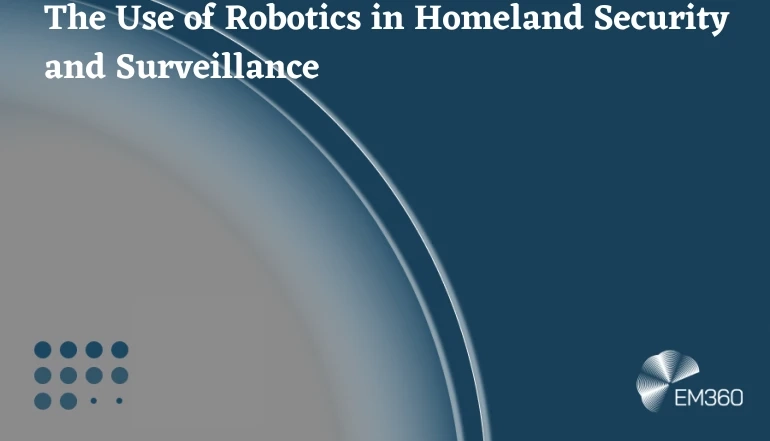Homeland security and surveillance have become increasingly important in recent years, as the threat of terrorism and other forms of crime continues to grow. To address these challenges, the technology industry has developed a range of robotics solutions that are being used to enhance the capabilities of homeland security and surveillance agencies.
Advantages of Robotics in Homeland Security and Surveillance
There are several advantages to using robotics in homeland security and surveillance, including:
Improved safety: Robotics can be used to perform tasks that are too dangerous or difficult for human agents, such as entering a building that may be rigged with explosives.
Enhanced capabilities: Robotics can be equipped with advanced sensors and cameras, allowing them to gather more information and data than a human agent could.
Increased efficiency: Robotics can perform tasks faster and more efficiently than a human agent, allowing security and surveillance agencies to gather more information and data in less time.
Applications of Robotics in Homeland Security and Surveillance
There are several applications of robotics in homeland security and surveillance, including:
Border security: Robotics can be used to monitor and patrol borders, helping to detect and deter illegal immigration and smuggling.
Explosive ordnance disposal: Robotics can be used to safely handle and dispose of explosive devices, reducing the risk to human agents.
Surveillance: Robotics can be equipped with cameras and sensors, allowing them to perform surveillance tasks, such as monitoring public events, gathering intelligence, and tracking criminal activity.
Recent Developments in Robotics for Homeland Security and Surveillance
The technology industry news is filled with recent developments in robotics for homeland security and surveillance. Some of the latest developments include:
Autonomous drones: Autonomous drones are being developed and deployed to perform border security and surveillance tasks, providing a cost-effective and efficient alternative to traditional surveillance methods.
Intelligent robots: Intelligent robots are being developed that can interact with the environment, gather and process information, and make decisions based on that information. These robots are being used in a variety of homeland security and surveillance applications, including border security, explosive ordnance disposal, and surveillance.
Collaborative robots: Collaborative robots are being developed that can work alongside human agents, providing enhanced capabilities and increased efficiency. These robots are being used in a variety of homeland security and surveillance applications, including border security and surveillance.
Challenges to the Adoption of Robotics in Homeland Security and Surveillance
While there are many benefits to using robotics in homeland security and surveillance, there are also challenges to their adoption, including:
Cost: The cost of developing and deploying robotics solutions for homeland security and surveillance can be high, making it difficult for smaller agencies to adopt these technologies.
Regulation: There are a number of regulations and laws that govern the use of robotics in homeland security and surveillance, making it difficult for agencies to deploy these technologies without running afoul of the law.
Technical challenges: There are a number of technical challenges associated with the development and deployment of robotics for homeland security and surveillance, including the need for robust, reliable, and secure systems.
Conclusion
The use of robotics in homeland security and surveillance is growing, as the technology industry continues to develop new and innovative solutions that address the challenges of securing our borders and protecting our citizens. While there are challenges to the adoption of these technologies, such as cost, regulation, and technical challenges, the benefits of using robotics in homeland security and surveillance are clear, making them an increasingly important tool in the fight against crime and terrorism.


